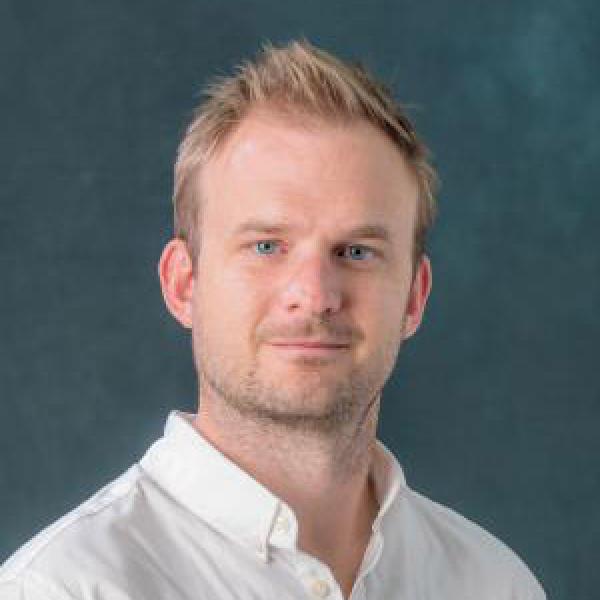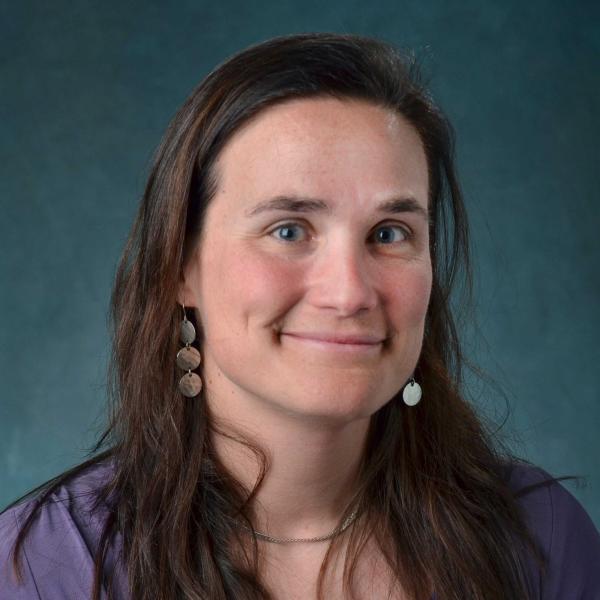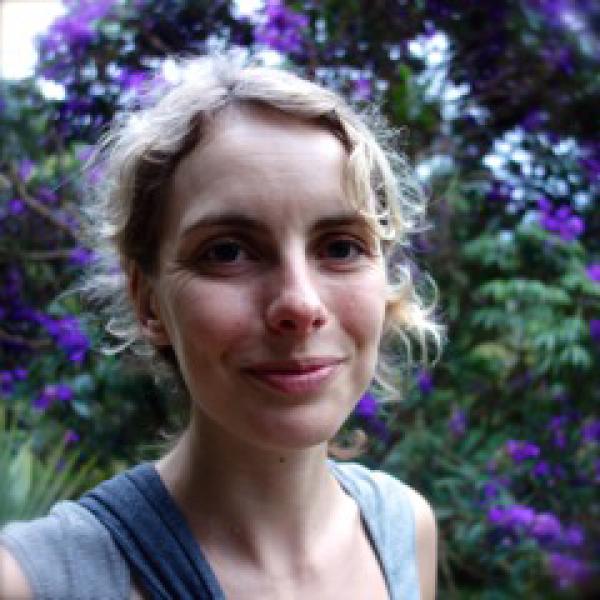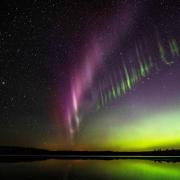Experts available: American Geophysical Union Fall Meeting 2021
New Orleans Online everywhere Dec. 13–17
The American Geophysical Union (AGU) Fall Meeting begins Monday, Dec. 13 in New Orleans and online. Top earth and planetary scientists from CU Boulder will present their research at this conference, from new findings on cosmic dust to atmospheric rivers and the rapidly-melting Thwaites glacier. Media are invited to register for and attend AGU.
CU Boulder is ranked No. 1 globally for earth and atmospheric science in the 2021 Global Ranking of Academic Subjects (GRAS). Find more experts and story ideas through the Cooperative Institute for Research in Environmental Sciences (CIRES), a partnership of NOAA and the University of Colorado Boulder.
Contact: Kelsey Simpkins, CU Boulder media relations
CU Boulder receives more NASA funding than any other public university in the country. Learn more about the Laboratory for Atmospheric and Space Physics (LASP) and CU Boulder aerospace.
Contact: Dan Strain, CU Boulder media relations
As a global leader in climate, environmental and energy research, CU Boulder is partnering with United Nations Human Rights to co-host the Right Here, Right Now Global Climate Summit in fall 2022. Contact cunews@colorado.edu to receive media updates.
Atmospheric and Earth Science

Thwaites Glacier
Ted Scambos, Cooperative Institute for Research in Environmental Sciences (CIRES)
tascambos@colorado.edu
Scambos studies the effects of climate change on the cryosphere, including one of the largest glaciers in the world: Antarctica’s Thwaites Glacier, which could be responsible for a significant part of sea level rise by the end of the century. He is the U.S. PI for the International Thwaites Glacier Collaboration Science Coordination Office.
AGU highlight: “The Threat from Thwaites: The Retreat of Antarctica’s Riskiest Glacier”
9 a.m. CST Dec. 13, press conference room and online through AGU's media center

Atmospheric rivers
Jan Lenaerts, Department of Atmospheric and Oceanic Sciences
Jan.Lenaerts@colorado.edu
Lenaerts studies how polar regions are impacted by atmospheric rivers, or “rivers” in the sky that move warm air from wetter to drier locations. They’re important for the water cycle but can cause extreme precipitation or melting events. He leads the Ice Sheets and Climate lab at CU Boulder.
AGU highlight: “The Contribution of Atmospheric Rivers to Antarctic Ice Sheet Snowfall”
1:48 p.m. CST Dec. 16, Room 215–16

Climate and weather modeling
Jennifer Kay, associate director for the CIRES Cryospheric and Polar Processes Division, associate professor of atmospheric and oceanic sciences and visiting scientist at the National Center for Atmospheric Research (NCAR)
jennifer.e.kay@colorado.edu
Using global climate models, Kay examines projected Arctic sea ice loss, as well as changes in cloud and precipitation processes and ocean heat transport due to climate change. Her work also explores how integrating observations and models can help scientists better understand a rapidly changing Arctic.
AGU highlight: “Less surface sea ice melt in the CESM2 improves Arctic sea ice simulation with minimal non-polar climate impacts”
10:24 a.m. CST Dec. 17, Room 280–82

Arctic precipitation
Mark Serreze, director of the National Snow and Ice Data Center (NSIDC), distinguished professor of geography and CIRES fellow
serreze@kryos.colorado.edu
In early 2020, NSIDC launched Snow Today, a website providing monthly insight into snow conditions and daily near-real-time data across the Western United States. Serreze is a co-author on new research in Nature Communications that finds more rain than snow will fall in the Arctic sooner than expected.
AGU highlight: “Snow Today at the National Snow and Ice Data Center”
1:07 p.m. CST Dec. 16, Room 211–13

Monitoring methane emissions
Caroline Alden, CIRES research scientist and Co-Founder LongPath Technologies, Inc.
caroline.alden@colorado.edu
Alden’s work focuses on using trace gas measurements in the atmosphere to address carbon monitoring and carbon-climate mitigation challenges. LongPath Technologies Inc. uses Nobel Prize-winning technology to monitor and quantify methane emissions in real time.
AGU highlight: “Network-based continuous methane emissions monitoring mitigates gas losses at scale”
4–6 p.m. CST Dec. 14, Poster Hall D-F

Colorado River drought
Balaji Rajagopalan, Cooperative Institute for Research in Environmental Sciences (CIRES) and professor of civil, environmental and architectural engineering
balajir@colorado.edu
Rajagopalan uses historical records and reconstructions to better understand and contextualize drought and climate change in the Colorado River Basin and across India, which helps stakeholders in these basins devise efficient water management strategies.
AGU highlight: “How unprecedented is the current Colorado River drought?—a paleo perspective”
1 p.m. CST Dec. 14, Room 203–05
Planetary Science

Space weather
Daniel Baker, director of the Laboratory for Atmospheric and Space Physics (LASP)
daniel.baker@lasp.colorado.edu
Baker explores the connections between Earth and the sun, and the potential dangers that space weather poses to human society. He has served as an investigator on several NASA missions, including the Magnetospheric Multiscale (MMS) and the Van Allen Probes missions.
AGU Highlight: “The Earth’s Radiation Belts: Lessons Learned From the Van Allen Probes Mission”
10:20 a.m. CST Dec. 14, Room 388-390

Mars and exoplanets
David Brain, Laboratory for Atmospheric and Space Physics (LASP)
david.brain@colorado.edu
Brain examines how the atmospheres of planets like Mars, Venus and others beyond our solar system evolve over time, insights that may help to shape the search for life on alien worlds. He recently launched an effort to study how magnetic fields may help—or not help— planets hang onto their atmospheres.
AGU Highlight: “Atmospheric Escape Rates from Mars—If It Orbited an M Dwarf Star”
4–6 p.m. CST Dec. 13, Poster Hall D-F

Asteroids
Daniel Scheeres, Ann & H.J. Smead Department of Aerospace Engineering Sciences
scheeres@colorado.edu
Scheeres has investigated the dynamics of how asteroids move through space through his work on NASA’s OSIRIS-REx and Japan’s Hyabusa missions. He is leading the Janus mission, which will launch in 2022 and send twin small spacecraft to rendezvous with two pairs of binary asteroids.
AGU Highlight: “Probing the structure and dynamics of NEO binary asteroids using targeted flybys: The Janus Mission”
4:10 p.m. CST Dec. 13, eLightning Theater V

Jupiter and beyond
Fran Bagenal, Laboratory for Atmospheric and Space Physics (LASP)
fran.bagenal@lasp.colorado.edu
Bagenal has studied planetary bodies throughout the solar system, from Jupiter and its moons to Pluto and Arrokoth, through NASA missions like Voyager, Galileo, Juno and New Horizons. She will also take part in NASA’s upcoming Europa Clipper mission.
AGU Highlight: “Range of Plasma Conditions at Ganymede”
4–6 p.m. CST Dec. 14, Poster Hall D-F

Cosmic dust
Mihály Horányi, Laboratory for Atmospheric and Space Physics (LASP)
horanyi@colorado.edu
Horányi leads the Institute for Modeling Plasmas, Atmospheres, and Cosmic Dust (IMPACT), which studies how dust streams through space and can even damage spacecraft when they collide. He and his colleagues have explored the dust and plasma environments around the moon, Saturn’s rings, the Kuiper Belt and more.
AGU Highlight: “The Lunar Meteoroid Monitor (LMM)”
8:25 a.m. CST Dec. 17, Room 395-396





